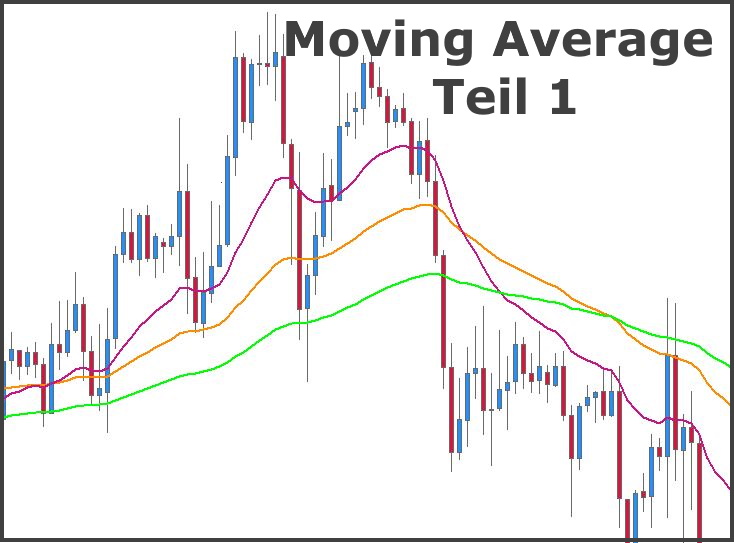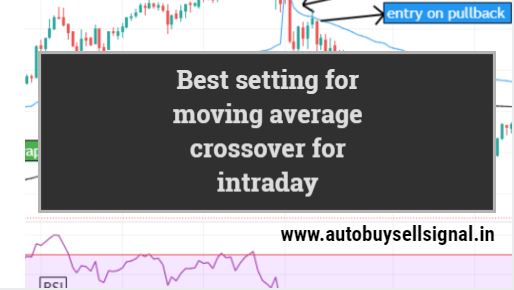

In this formulation, a shorter exponential moving average will have a larger multiplier – and thus give more weight to recent price data – than a longer exponential moving average. Typically, the multiplier is calculated as: The multiplier is an important term in the exponential moving average and, in the standard use, depends on the length of the exponential moving average window. The exponential moving average for a given interval is calculated as:Įxponential Moving Average = (Closing Price – Previous Interval’s EMA) * Multiplier + Previous Interval’s EMA
#Best moving average for day trading software
In reality, to reduce calculation time, most software uses at least 250 intervals and can be accurate to within a fraction of a cent. However, it is worth noting that where in the past an exponential moving average calculation starts will affect its accuracy – back-calculating from years of price data is theoretically required to produce a nearly exact exponential moving average.

In general, a simple moving average is used for the oldest data point in the calculation window since the exponential moving average requires an external reference point to start. In calculating the the current day’s exponential moving average, the exponential moving averages of all the previous days in the moving average window are required. The exponential moving average differs from the weighted moving average in that the calculation applies more weight to recent price data than to older price data on a multiplicative basis rather than based on set weights. Weighted Moving Average = (Closing Price 1 * Weight 1) + (Closing Price 2 * Weight 2) … / Number of Intervals Exponential Moving Average The weighted moving average is calculated by multiplying each closing price by its respective weight, summing them, and dividing by the number of intervals: The sum of the weights must add up to 100%, but are distributed such that, for example, the most recent closing price in a five-day weighted moving average is weighted 33% while the oldest closing price is weighted only 7%. Weighted moving averages give more weight to recent price data than to older price data within the sliding window. This means that, in the example of a 10-day simple moving average, each day’s closing price is weighed equally when calculating the average – more recent data is not given special attention in the moving average. Simple Moving Average = Sum of Closing Prices of Each Interval / Number of Intervals The simple moving average is easy to calculate since it is simply an arithmetic mean of a set of closing prices, with the number of prices included determined by the user-defined length of the moving average.

However, note that the moving average will always lag the price increase or decrease since it is including earlier price data that drags it down or up, respectively, relative to the latest price. The opposite is true for a stock that is decreasing in price over time. All three moving averages operate on a sliding window basis – that is, the moving average slides along the price data such that at each new calculation the oldest data point is dropped from the moving average and the next most recent data point is added to the moving average.Īs a result, a stock that is increasing in price over time will have a moving average that also increases, since older, lower price points are dropped from the calculation as newer, higher price points are added in. There are a variety of different moving averages used by traders, but by far the most widely used are the simple moving average (often abbreviated SMA), weighted moving average (often abbreviated WMA), and exponential moving average (often abbreviated EMA). Moving averages can also be used to identify levels of price support and resistance, which can be useful for confirming breakouts predicted by other indicators. In contrast to other popular indicators, moving averages do not predict future price action, but rather make it easier to identify trends in recent or historical price data. Moving averages are a lagging or trend-following indicator since they are calculated from previous price data. Moving averages smooth price action to make it easier to visualize trends, help to filter out noise of random price fluctuations, and can be used to identify levels of support and resistance.

Moving averages are among the most commonly used indicators in technical analysis and one of the primary indicators that nearly every trader has overlaid when studying a stock’s chart.


 0 kommentar(er)
0 kommentar(er)
